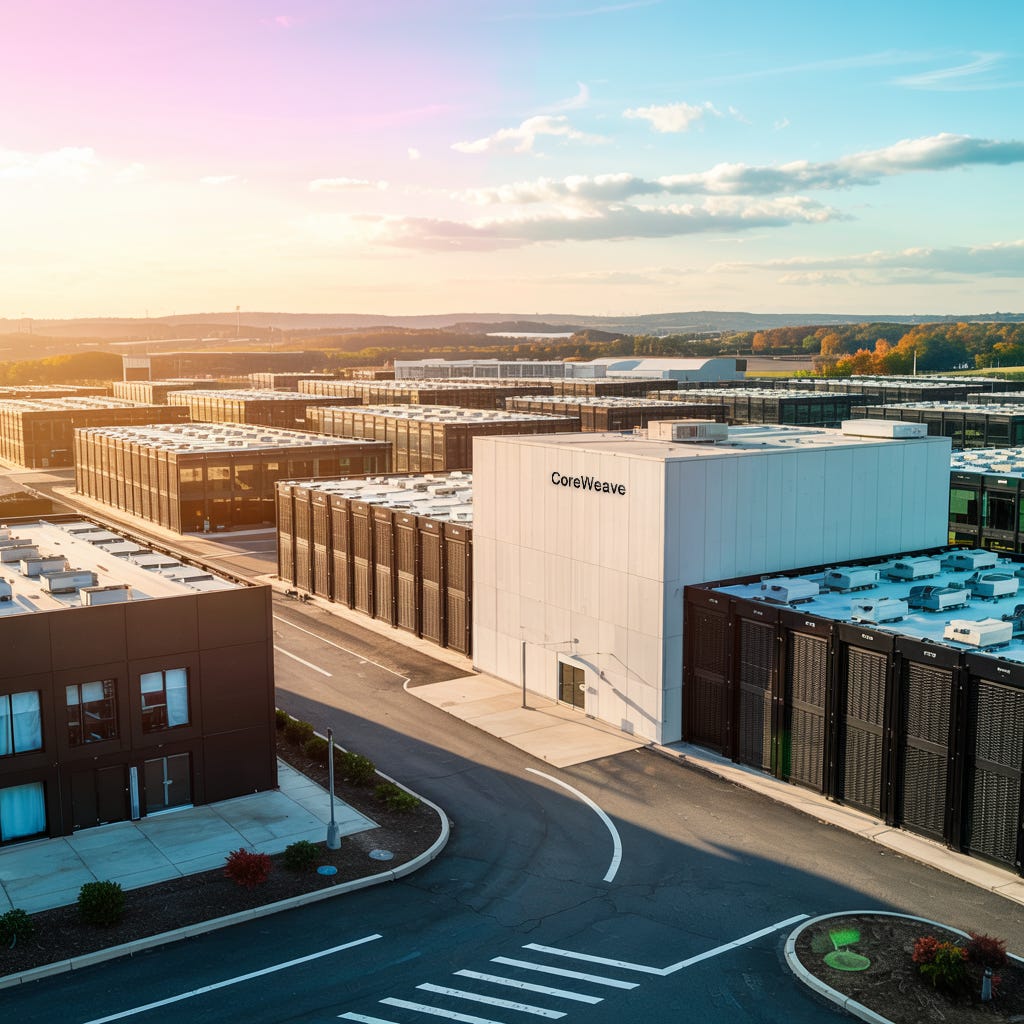CoreWeave Q2 2025: $9B Core Scientific Bet Redefines the AI Infrastructure Race
Revenue triples, CapEx accelerates, and landmark customer deals position CoreWeave as the fastest-scaling challenger in hyperscale AI infrastructure.
Welcome to Global Data Center Hub. Join investors, operators, and innovators reading to stay ahead of the latest trends in the data center sector in developed and emerging markets globally.
CoreWeave’s Q2 2025 results underline both the scale of AI demand and the financial strain of chasing it.
Revenue surged to $1.213B, up 207% year-over-year, with a contracted backlog swelling to $30.1B.
Guidance for full-year revenue was raised to more than $5B, confirming that customers are locking in multi-year GPU supply at unprecedented scale.
But the most important development is not the revenue beat.
It’s CoreWeave’s attempt to reinvent itself through vertical integration.
The proposed $9B all-stock acquisition of Core Scientific would bring 1.3GW of gross power capacity in-house, remove billions in lease obligations and supposedly generate $500M in annual cost savings by 2027.
This is CoreWeave’s answer to the “powered shell” bottleneck throttling AI infrastructure buildouts.
The investment thesis is no longer about whether CoreWeave can sell compute.
That much is clear.
The question is whether owning infrastructure at scale can offset mounting debt, soaring CapEx, and integration complexity or whether the strategy adds a new layer of risk to an already stretched balance sheet.
Earnings Breakdown & Infrastructure Strategy
Core Financials (Q2 2025):
Revenue: $1.213B (+207% YoY).
Net Loss: –$291M (EPS –$0.60).
Adjusted EBITDA: $753M (62% margin).
Backlog: $30.1B (+86% YoY).
CapEx: $2.9B in Q2; $20–23B for 2025.
Capacity & Operations:
470MW active across 33 sites.
2.2GW contracted power (+600MW sequentially).
Targeting >900MW of live power by year-end.
Expansion includes a $6B Pennsylvania campus and a New Jersey acquisition, with a large-scale ramp in Q4 tied to GPU deployments.
Customer Momentum:
Expanded $4B contract with @OpenAI, lifting total commitments to ~$16B.
Added new customers including BT Group, Cohere, Mistral, LG CNS, and Woven by Toyota.
Financing Structure:
Raised >$25B in debt and equity since early 2024.
Q2 interest expense: $267M, projected to rise as high as $390M in Q3.
No maturities until 2028, but free cash flow remained deeply negative at –$2.7B in Q2.
Vertical Integration & the Core Scientific Bet
CoreWeave’s boldest move this quarter is the proposed $9B all-stock acquisition of Core Scientific. The deal isn’t just about scale, it’s about control.
By bringing Core Scientific’s 1.3GW of gross power capacity in-house, CoreWeave eliminates reliance on leased facilities and gains direct command over the powered shells that are now the rarest commodity in AI infrastructure.
Management projects $500M in annual run-rate cost savings by 2027, alongside the removal of an estimated $10B in future lease obligations.
But vertical integration cuts both ways.
Core Scientific is still carrying its own liabilities, and folding operations into CoreWeave introduces significant execution density.
Integrating personnel, standardizing operations across multiple sites, and aligning build timelines will test management bandwidth at precisely the moment CapEx intensity is peaking.
For investors and operators, the question is whether this deal cements CoreWeave’s status as a long-term AI hyperscaler or creates new layers of complexity that drag on free cash flow and dilute execution focus.
The answer will hinge on whether the promised cost efficiencies and power capacity gains actually materialize at the speed customers and creditors expect.
Forecast & Strategic Close
CoreWeave’s near-term story is no longer just about signing contracts or adding GPUs.
It’s about whether vertical integration can stabilize its model.
The Core Scientific acquisition is the defining test:
If integration is smooth and the $500M in annual savings materialize, CoreWeave will emerge with one of the largest owned power portfolios in the U.S. AI market.
But the risks are obvious.
More than half of 2025 CapEx will hit in Q4, interest expenses are climbing toward $400M per quarter, and management is attempting to absorb a multi-billion-dollar operator while still scaling new campuses. Execution bandwidth, not demand, is now the scarcest resource.
For investors, the implications are clear: CoreWeave is betting that control of infrastructure outweighs near-term financial strain.
For operators, it’s a signal that ownership of powered shells and vertical integration will increasingly define competitive advantage in AI infrastructure.
Bottom line: CoreWeave has proven demand is real. What remains to be proven is whether it can translate vertical integration into resilience, turning today’s debt-fueled sprint into a sustainable hyperscale platform.

